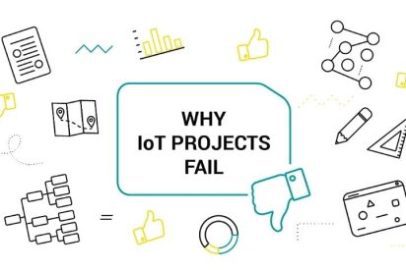IoT projects offer companies growth and optimization potential. But often, this potential cannot be fully used in practice. The five most common reasons why IoT projects fail.
Innovative IoT projects enable companies to establish new business models or optimize existing processes. However, when it comes to implementation, those responsible for the project face several internal and external challenges. On the one hand, the technical solutions must be derived from individual customer needs; on the other hand, the details must not be too much in focus.
Those responsible for IoT projects are challenged at various levels. For inexperienced companies, it is therefore usually worthwhile to view such innovative projects as a separate company. In this way, they can generally deal better with the new dynamic and do not face the difficulty of transforming the entire organization immediately. If the mindset of the responsible team is characterized by innovation, communication, transparency, and customer focus, the most important cornerstones for successful IoT projects have been laid.
Also Read : 7 Points-How To Get A Handle On IIoT Data Integration

